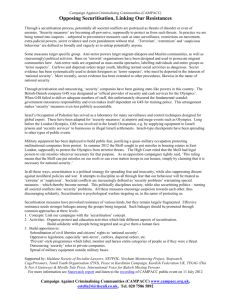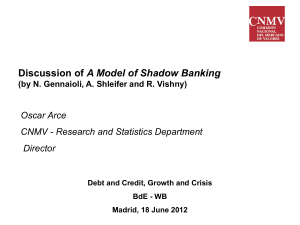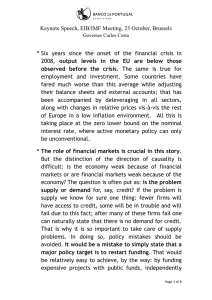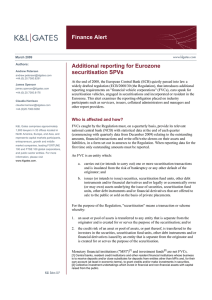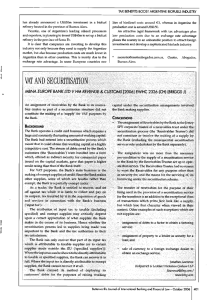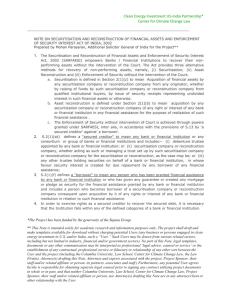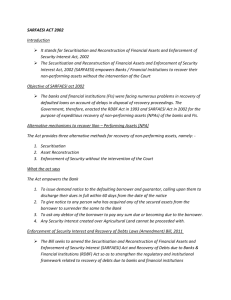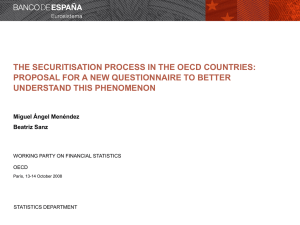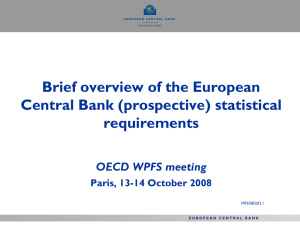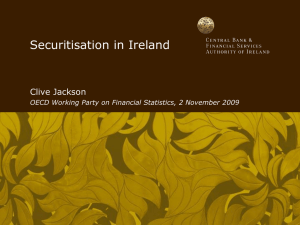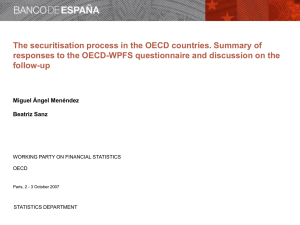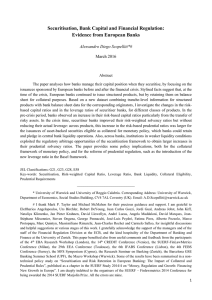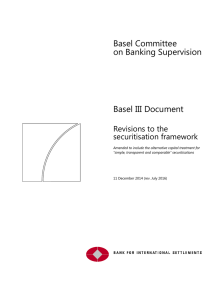Securitisation as tool to promote a sound bank d l i
advertisement
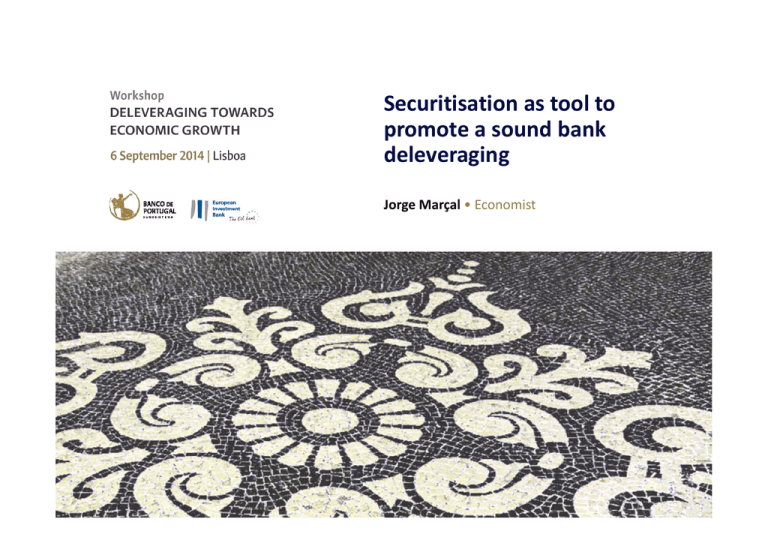
Securitisation as tool to promote a sound bank d l deleveraging i Jorge Marçal g ç • Economist European Securitisation SWOT analysis “qualifying securitisation” (…) could aim to identify securitisations where their simplicity structural robustness and transparency (…) their simplicity, structural robustness and transparency ( ) BoE and ECB paper, May 2014 It should be simple (…), real (…) and transparent. M. Draghi, ECB, June 2014 (…) a regime of “qualifying securitisations” could be established for those ABS that are simple, transparent and robust. Such securitisations could benefit from a risk‐adapted risk adapted regulatory framework (…) ( ) European Union Financial Service Committee 2 • 6 September 2014 European Securitisation SWOT analysis Strengths Weaknesses Offers a yield pick‐up in a low yield environment Expensive funding source for the originators p g g Risk transfer away from the banking system Higher capital requirements for investors than other funding instruments issued by banks Banks’ balance sheet deleveraging Banks’ capital relief…? Good performance during the financial crisis Complex instrument in term of structuring and monitoring Higher transparency Alignment of interests between originators and investors Opportunities Further integration toward pan‐European market Further integration toward pan European market Long‐term investors seek investment opportunities Development of a High Quality Securitisation Market ECB purchase program Threats Regulatory uncertainty Regulatory uncertainty o HQLA definition o BCBS revision on securitisation framework Changes in rating agency methodologies Post‐crisis stigma Strong covered bonds market in Europe Higher EIB/EIF involvement after its capital increase Geographically fragmented market Harmonization: underlying asset => legislation Low credit growth prospects 3 • 6 September 2014 European Securitisation SWOT analysis Possible topics for discussion include: What is the role for securitisation? Is low credit a cause or consequence of low ABS issuance? i ? Will the resources created with securitisation be used to lend to the economy? g system? y Is securitization a tool to enhance risk diversification outside the banking How to attract funds from long-term investors? How can regulation on “high quality securitisation” be shaped to be more friendly to both sides, sides originators and investors? Is it consensual that the securitisation’s main strength is to free up capital from the originators perspective, while from the investors’ view is the fact that its securities pay a higher yield? How to ensure that incentives are correctly aligned (release capital, while requiring banks to maintain skin in the game and monitor properly)? Can the ECB have a decisive role in the reigniting the ABS market? Is a pan-European ABS market achievable in the future? In this vein, what can be done to foster harmonization? Which other tools may foster lending? 4 • 6 September 2014

